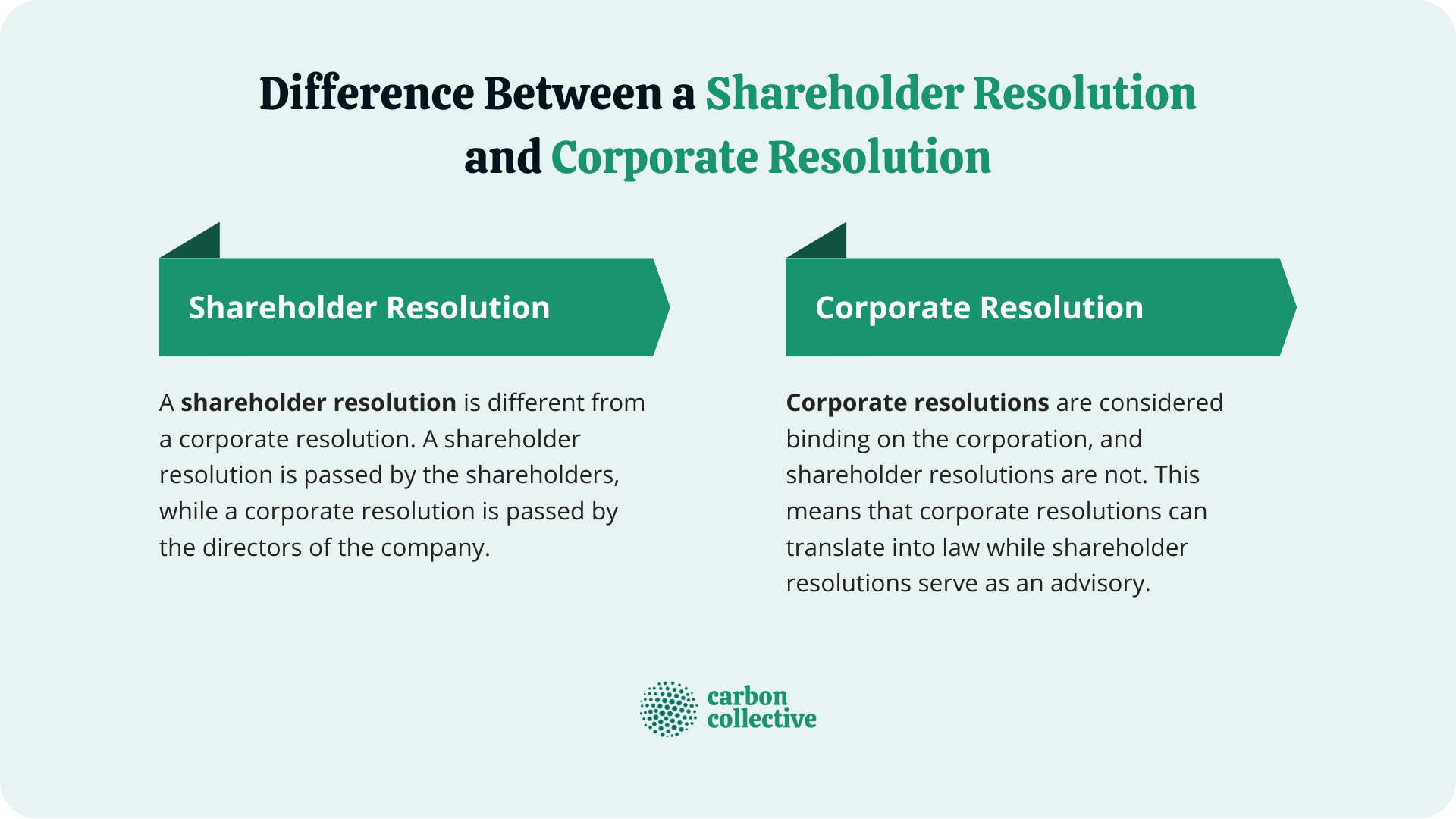What Are Shareholder Resolutions?
Shareholder Resolutions are a formal way for shareholders to communicate with the company’s management. The resolutions are submitted to companies in their annual meeting. A vote then takes place in order to approve or disapprove said document.
Shareholder Resolutions can refer to anything that matters to the shareholders, such as executive compensation, corporate social responsibilities, global warming, and labor relations.
All shareholder resolutions are non-binding, which means they will not progress into law. They state the opinion of shareholders on matters that concern them. Even if this is more likely just an advisory, it can advocate causes or changes.
Purpose of Shareholder Resolutions
Shareholder resolutions allow shareholders to affect changes or exercise their rights and influence how the company is run.
Additionally, resolutions influence board decisions on social issues, such as using renewable resources, minimizing carbon footprint, and global warming.
Types of Shareholder Resolutions
There are three types of resolutions:
Ordinary Resolution
An ordinary resolution is passed at the corporate annual meeting by a simple majority of shareholders. Most business carried out in annual meetings involves ordinary resolutions.
These are some of the issues involving ordinary resolutions:
- Changes of directors
- Appointment of internal directors or external auditors
- Deciding on the pay of high-level executives
Special Resolution
A special resolution is passed in annual meetings by a majority of shareholders who hold at least 75% of the company's shares. This type of resolution is used for important or controversial matters.
The following examples need special resolutions.
- Amending the company's constitution
- Reduction in share capital
- Ratification of the Board of Directors decisions
Unanimous Resolution
A unanimous resolution is passed by all shareholders. This type of resolution is used for extremely important or controversial issues. This means that the board of directors consents to the cases presented in the resolutions.
You have to note that the severity of issues presented through a shareholder resolution varies from one jurisdiction to the other.
Requirements to Introduce a Shareholder Resolution
Certain requirements must be met to introduce a shareholder resolution.
- The most crucial requirement is that the resolution must be in writing and signed by the shareholder or shareholders introducing it
- The resolution must also state the name of the company and the address of its registered office
What to Include in a Shareholder Resolution?
A few things require inclusion in a shareholder resolution, but no standard form has been issued. Therefore, here are some points to consider in crafting a shareholder resolution:
- Details of the qualifying shareholder's holdings and voting capacity, as well as a verification document
- Detailed information on the proposal – relating to public-facing decisions, such as corporate governance, corporate social responsibility, and environmental issues, when applicable
Important note: The proposal should not concern day-to-day business decision-making.
- It should include the justification for the request. Also included are any supporting documents in support of the idea
- Information on any risks or operational implications that may arise as a result of the request's approval
- Information from the market to back up the plan, such as consumer feedback
- Details on any existing statutory regulations that apply to the proposal
- Immediate and long-term benefits of accepting the request
Difference Between a Shareholder Resolution and Corporate Resolution
Final Thoughts
Shareholder resolutions are a crucial way for shareholders to communicate with the management of the company. The resolutions can be about anything the shareholders deem important, from corporate governance to environmental issues.
It is crucial to remember that not all resolutions will be passed, but it is still important to put them forward as they can help raise awareness about issues.
FAQs
1. What is a shareholder resolution?
A shareholder resolution is a formal way for shareholders to communicate their views on issues affecting the company to the management of the company.
2. What types of resolutions are there?
There are three types of resolutions: ordinary, special, and unanimous.
3. What is an ordinary resolution?
An ordinary resolution is a resolution passed by a majority of shareholders.
4. What is a special resolution?
A special resolution is a resolution passed by two-thirds or not less than 75% of shareholders.
5. What is a unanimous resolution?
A unanimous resolution is a resolution passed by all shareholders.


